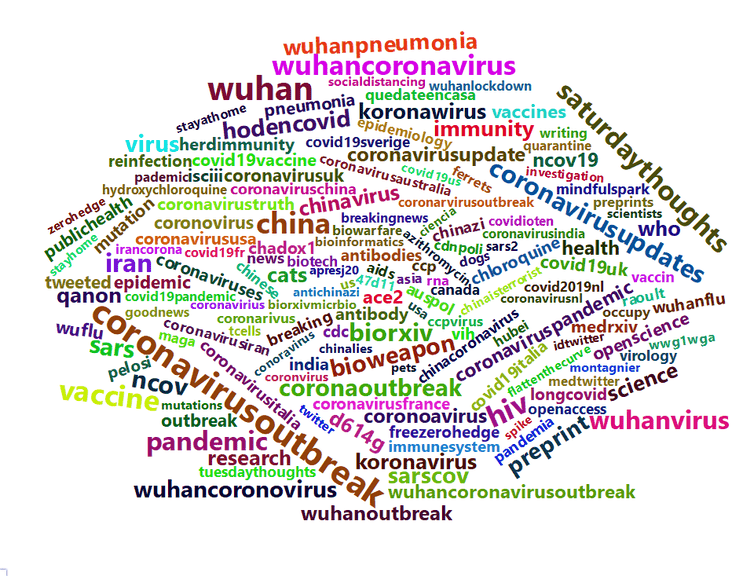The Pandemic Has Been a Proving Ground for Preprints

Since the first reported case of COVID-19, cities across the world have shut down, people have stopped socializing and going to work, economies have taken a hit and there have been far too many deaths. But at the same time the scientific community has come together and produced an immense amount of knowledge on the virus, developing multiple vaccines in less than a year.
This has been possible because scientists have rapidly shared their research on COVID-19, and preprints – scientific papers that haven’t been formally reviewed – have proved essential in this effort. In a new piece of research, my colleagues and I found that the pandemic has resulted in scientists increasing the use of preprints to release findings, and that these papers are also being read more frequently.

This has also produced a cultural shift in how preprints are used and viewed by society. The media and the public are now far more likely to encounter and discuss preprints and their findings on a daily basis.
What are preprints?
Scientific papers are traditionally published in academic journals, having first had their quality formally verified by other scientists, in a process known as peer review. Preprints are scientific manuscripts that are instead posted online – usually on specialised servers – and which haven’t been peer reviewed (though they may be in the future).
Preprints are free to read and are often updated, with readers able to access older versions to see how the manuscript has developed. Releasing research as a preprint therefore allows scientists to receive feedback from more colleagues than if relying just on a formal peer review.
Most importantly, preprints enable researchers to share their research when they deem it’s ready, rather than relying on gatekeepers (in the form of a journal’s editors). This makes science more equitable, and has huge benefits for early-career researchers, who can more readily demonstrate their productivity, which can help with job, fellowship and grant applications.
A side effect of this is the acceleration of science. Preprints are typically posted within two days of being submitted to a server, in contrast to the months or years that it can take for research to go through peer review.
Preprints thus have clear benefits for scientists. But because they allow scientific findings to be shared quicker, preprints benefit the public too: quickly disseminating new knowledge – for instance on new variants of the virus, or new treatments – can save lives. Speeding up science has been vital. And although many journal publishers have adopted new practices to help prioritise COVID-19 science, on average peer review still takes 34 times longer to make findings public than posting a preprint (which usually takes 24-48 hours).
Preprints in the pandemic
This is why it’s good news that preprints have commonly been used to disseminate COVID-19 science. Our peer-reviewed research (itself first posted as a preprint last year) found that during the first ten months of the pandemic, more than 25% of COVID-19 literature (30,260 papers) was first shared as a preprint. Compared to the earlier Ebola and Zika epidemics, both the volume and proportion of research being shared as a preprint is far higher.
And it isn’t just that scientists have been posting preprints more frequently. COVID-19 preprints were viewed 18.2 times and downloaded 27.1 times more than non-COVID preprints posted during that same ten-month period, which shows that they’ve been highly useful during the pandemic.
There’s also been a change in who has accessed preprints. Before coronavirus struck, preprints were rarely mentioned in the news. However, more than 25 percent of COVID-19 preprints have featured in at least one news article, with high-profile ones receiving attention from large news corporations, such as the BBC.
COVID-19 preprints are also being used to directly influence policymaking decisions. The World Health Organization and the European Centre for Disease Control have both used preprints in policy documents during the pandemic. Looking at similar policy documents from before COVID-19 arrived, preprints don’t appear to have been widely referred to before, highlighting their new importance.
Unfortunately, all of this sharing has not been without issues. Politicians have shared some egregious examples of poor science – former US president Donald Trump caused immense damage with his selective use of highly flawed and fraudulent papers. Publishing research that hasn’t been peer reviewed does run the risk that poor-quality science can be spread widely. But poor or fraudulent research can also get through peer review – so it’s wrong to assume that the traditional publication process completely safeguards against these issues.
Twitter has emerged as a key platform for sharing preprints, with almost 100 percent of COVID-19 preprints having been tweeted about at least twice. When we looked at the hashtags associated with COVID-19 preprints, another problem emerged: while for many their scientific message was being clearly shared, for a subset, their findings were being hijacked to promote the views of right-wing politicians and conspiracy groups. This hijacking also included overt xenophobia and racism.
A preprinted future?
It’s clear there’s been a cultural shift in the sharing, dissemination and use of preprints. Scientists who had previously never used preprints have turned to them, policymaking bodies are using preprints to make key decisions, news organisations are refining their reporting practices around preprints, and immunology has become etched into the public consciousness.
There have been some difficult lessons in the responsible use and sharing of preprints along the way. In particular, journalists and scientists need to work together to better educate the public about preprints and to more accurately report the often uncertain findings they contain. Nevertheless, the benefits of preprints have shone through in the dark times of the pandemic, suggesting that their increased use may be here to stay.



























































































